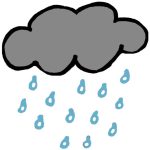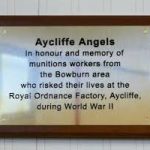Welcome to Class 6!
It is fantastic to be back to school and starting our Year 6 journey. We have been so busy over the last few weeks and all pupils have settled in very well. There are some key facts below to keep Year 6 pupils on track and organised.
- Homework is sent home on a Friday and due back by Wednesday.
- Spellings are sent home weekly.
- PE is taught on Tuesdays and Fridays.
- Year 6 pupils should wear their PE kit to school on these days.

Curriculum Coverage
Our topic for this term is World War II
Literacy
In Literacy we have been reading a children’s novel called ‘Once’ by Morris Gleitzman. The story follows the life of a young Jewish boy named Felix and is an important reminder of the very sad events of the Holocaust. Year 6 have shown an incredibly mature attitude towards an emotional story. They have enjoyed experimenting with descriptive writing and have planned and written their own story based on the adventures of Felix. We have just begun our next literacy topic of WWII poetry. Children will be reading 3 poems by excellent authors who were alive in the 1940’s. They will be analysing language use, comparing the use of poetic devices and even writing their own adaptations of each poem. I am sure Year 6 will produce some amazing work on this unit! Later in the term, we will be reading Call of The Wild by Jack London and Everest by Jim Howes. We plan to write our own American Adventure story and Online Blogs linked to Mount Everest.
Maths
In maths, we have been covering the unit of Place Value. Children have worked really hard to cover the Year 5 objectives they missed last term as well as completing the new Year 6 lessons they need this year. They have risen to the ‘catch up challenge’ and are already showing how incredibly talented they are! Next, we are going to be looking in greater depth at the four number operations, using them in context and through problem solving. Later in the term, children will be completing the unit of Fractions. Furthering their knowledge of equivalent fractions, decimals and percentages. Maths is taught through the Mastery Approach and although this is new to Year 6, pupils have adapted to the new learning methods very quickly.
Science
In Science, we are learning about Charles Darwin. We have explored the Theory of Evolution and discussed Natural Selection. We have planned our own scientific experiment and will soon be carrying out an investigation as well as recording our results in tables and graphs. Later in the term, we will be learning more about the topic of Light. We will be exploring how light travels and investigating light phenomena. I am sure children will really enjoy this unit as they have excellent opportunities to work scientifically and think in greater detail.
PE
To keep us fit and healthy, we have 2x hours of PE per week as well as active playtimes and Outdoor Learning. In PE lessons, we have been creating our own WWII themed dance as well as exploring more modern fitness activities. Some pupils have even led the warm up activities for our class. Outdoors, we have been developing our running and individual fitness. We have completed personal challenge tasks such as 30 second sit ups, squats, heel kicks and high knees. We have also competed in running races and have developed our running techniques. Next half term, we will be using different circuits to develop our agility and core strength. As the weather turns colder, it would be beneficial for pupils to have warm clothing for PE such as jumpers, fleeces or hoodies. A waterproof coat will also be needed on rainy days.
- EPSON MFP image
History
In History, we are learning all about WWII. In more detail, we will be; organising events on a timeline, researching how the Bowes Museum supported the war effort, explaining who the Aycliffe Angels were and their impact, and finally, we will be identifying local industries that give us clues about our area’s contributions to the war effort. It is going to be a very busy half term but certainly one that pupils will find very interesting!
Geography
In Geography, we are focusing on our local area and the North East of England. We will be exploring the question: How did WW2 affect the human and physical geography of Teesdale, North East and Europe more widely? In further detail, we will; explain what Stainton Camp was and which buildings were situated there, research which buildings from the past survived and were important to soldiers in BC, explain where soldiers based in Teesdale went off to battle, identify which countries were involved in WW2, explore where BC evacuees came from and where they stayed/went to school, and finally, explain how the North East was affected by bombing raids. We have worked hard to link high quality Geography into our new curriculum and we are certain that pupils will be inspired by these topics. We look forward to sharing our work!























